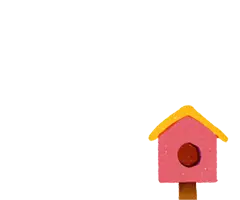Part 5Miscellaneous provisions
138CRegulations in respect of contaminants and contaminated premises
The Governor-General may, by Order in Council made on the recommendation of the Minister, make regulations prescribing substances, or classes of substances, as contaminants for the purposes of this Act.
Before making a recommendation for the purposes of subsection (1), the Minister must be satisfied that the substance may be harmful to the health of persons.
The Governor-General may, by Order in Council, make regulations for all or any of the following purposes:
- prescribing maximum acceptable levels, or a means of calculating maximum acceptable levels, of contaminants for premises for the purposes of the definition of contaminated:
- prescribing maximum inhabitable levels of contaminants for premises for the purpose of section 59B:
- imposing on landlords requirements in respect of contaminants for the purposes of section 45(1)(bd) or 66I(1)(bc):
- prescribing methods for carrying out tests for the presence of contaminants in premises (including for testing premises, taking samples for testing, testing of samples, establishing levels of contaminants present in premises, and who is authorised to carry out the tests or parts of the tests):
- prescribing decontamination processes (which may extend to pre-decontamination and post-decontamination assessment, sampling, and testing, and may include who is authorised to carry out processes or parts of processes):
- prescribing, for the purposes of section 45(1AAB)(b) or 66I(1B)(b), additional rules about how decontamination of premises is to be carried out while the landlord continues to provide the premises to the tenant (for example, periods (or means of calculating periods) within which processes or parts of processes must be begun or completed):
- prescribing processes and duties for the purposes of section 62(3A) (which relates to abandoned goods on contaminated premises).
Regulations under this section may make different provision for different cases on any differential basis, including—
- contaminants or classes of contaminants:
- spaces, materials, or other aspects of premises or goods, or for different descriptions of premises or goods:
- levels of contamination:
- without limiting paragraph (b), ways in which premises or goods, or spaces or materials or other aspects (for example, surfaces) of premises or goods, may have or may become contaminated.
The requirements that may be imposed by regulations under subsection (3)(c) include the following (for example):
- requirements to test premises for the presence of contaminants in certain circumstances:
- requirements to use the methods prescribed, or parts of those prescribed methods, for carrying out tests or parts of tests for the presence of contaminants in premises, in all or in certain circumstances:
- requirements to use prescribed decontamination processes if decontaminating premises.
Requirements under subsection (5)(a) may apply to, or may be different for, different stages of tenancies (for example, at the commencement of or during a tenancy).
Regulations under this section, including requirements imposed by regulations under this section, may be subject to exceptions.
Regulations under subsection (3)(g) may—
- require compliance with, or otherwise incorporate, sections 62(3) and 62A to 62D—
- in whole or in part; and
- with modifications, additions, or variations specified in the regulations; and
- in whole or in part; and
- without limiting the generality of the above, permit the landlord to decontaminate abandoned goods and deduct from the proceeds of sale the costs of decontaminating the goods that were reasonably incurred by the landlord.
In this section, premises includes facilities.
Regulations under this section are secondary legislation (see Part 3 of the Legislation Act 2019 for publication requirements).
Notes
- Section 138C: replaced, on , by section 47 of the Residential Tenancies Amendment Act 2019 (2019 No 37).
- Section 138C(10): inserted, on , by section 3 of the Secondary Legislation Act 2021 (2021 No 7).


